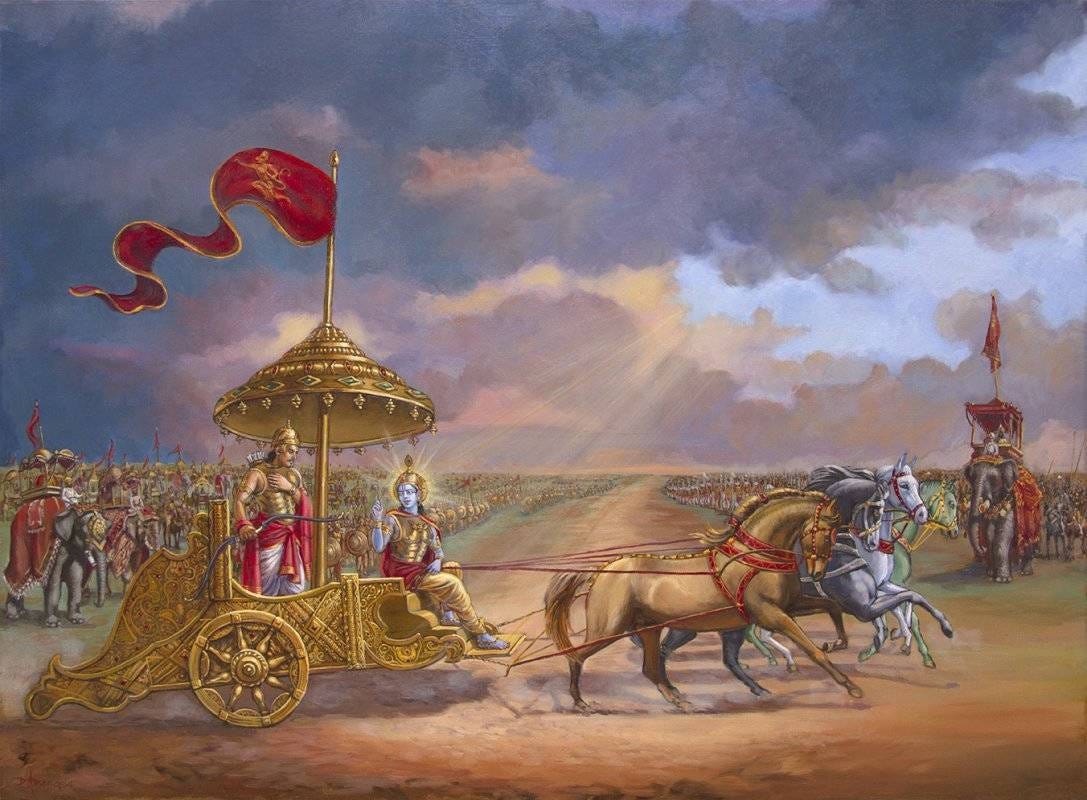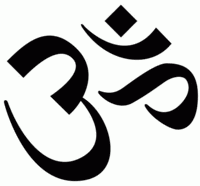Discussion on Bhagwad Gita: Chapter 1; Verse 1

Bhagwad Gita is one of most widely read of all scriptures in the world. It is eternal in its appeal and it challenges a soul at all levels – mental, emotional, physical and spiritual. No two people can agree on the message it gives because Gita is a personal relationship. Shri Krishna was a unique being in history of spirituality. Never again has another being descended who had mastered every Yoga at all levels. Most spiritual beings could only master one “way”, method, or Yoga. Here was one being who had realized every way and then discussed the pros and cons of all of them.
It has been my goal to share my thoughts and commentary on Bhagwad Gita such that one day this becomes the starting point of exploration for my next generation – my own kids.
Everyday starting today, I will take up at least one shloka (verse) in sequence and expand on it, discussing what is the relevance and greatness of Krishna’s message. I am sure there will be differences with how others may view them, so I ask for your pardon and hope that reading another view will only lead to a deeper exploration for everyone.
The daily shloka will be followed by Hindi translation and a poetic translation in Brajbhasha as well by Dr. Mridul Kirti – a renowned Poetess from India (For more writings and translations by Dr. Mridul Kirti, please visit her page on Kavita Kosh) as well as an English translation by me. I hope that this will be as useful a journey for you as I am sure it will be for me.
Chapter 1 / प्रथम अध्याय
धर्मक्षेत्रे कुरुक्षेत्रे समवेता युयुत्सवः।
मामकाः पाण्डवाश्चैव किमकुर्वत संजय॥१-१॥
Hindi:
हे संजय, धर्मक्षेत्र में युद्ध की इच्छा से इकट्ठे हुये मेरे और पाण्डव के पुत्रों ने क्या किया।
brajbhasha
धर्म सुखेत, कहौ कुरु खेत में,
संजय ! जुद्धन चाह धरै जू.
पाण्डव, मोरे सुतन सब एकहिं,
ठांव खड़े कहौ काह करें जू
English
Sanjay, gathered in Dharma-kshetra Kurukshetra (place of Dharma, Kurukshetra), what are my and Pandava’s sons doing?
Discussion
What is most remarkable is that every action is characterized in Hinduism as “Dharma”. Even war. Kurukshetra was not just a battle-field but a place where Dharma was being given shape to.
Dharma does not equate to “Religious duty” nor does it have any relationship to Morality or ethics. All of which are man-made pegs to hold our egos on. Dharma, actually means the cosmic flow or law.
Nature and this creation has a natural flow. Every creature works as per their tendencies. The color of the tendencies (Varna) is what propels a person in a certain direction. The action (karma) of a person is decided by the interaction of one’s Varna with another’s Varna in the giant cosmic flow of Dharma and that is what moves the world.
Until you are influenced and affected by your tendencies and perform specific actions as per your past conditioning as opposed to your Free will, you are fighting against the Dharma or the cosmic flow – and therefore “Adharmic”. In that situation, even mind – sans any physical violence – becomes a giant battlefield. This is what J. Krishnamurti often called “Conflict from conditioning”.
When one realizes that Dharma or Cosmic Law is ONE for everyone while Varna or one’s conditioning is unique for everyone and therefore really responsible for the unpredictable results from every action, then one can be ready for liberation.
In this shloka – the first one, Dhritrashtra (Dhrit means will or resolve and rashtra means nation – one who would set the direction and will of the nation) in one sentence lays down the main reason for War. Any war. “Mine” vs “Your”.
Although he was the patriarch and a father figure to both, his and his brother’s sons and thus should have been similar in love for them, he betrays his bias here by segregating them as मामकाः and पाण्डवः
This one separation was the cause of the war. This separation between Me and You is the cause of all wars. Land, Religion, God, Wealth, etc are all objects in the framework which distinguishes. The Duality that manifest as Me and Mine, ultimately leads to Me and You.
The first shloka clearly showcases the unconscious and “learned” understanding of Dhritrashtra that Kurukshetra was now a “Dharma-kshetra” and his prejudiced love for his “own” sons.
With this the Mahabharat and our association with Krishna’s message will begin.




